Recently I basted my Broken Triangles quilt and it's not secret that I favor spray basting over pin basting. And I've had a couple friends ask me in the past what method I use when I spray baste. I don't know if my method is pretty standard or not, but this is how I do it. Ideally I would prefer to spray baste outside, unfortunately, if I'm basting at home I don't have an outdoor slab of concrete flat, large or clean enough to baste a quilt so I have to do it indoors. I usually clear out my dining room since it's pretty open, which means better ventilation. I also open all the windows to keep the air circulating. Spray basting isn't horribly messy, but you're dealing with aerosol glue in a can, so you need to protect your workspace. I wouldn't recommend basting too close to furniture you want to keep.
First, I lay my quilt back (right side down, of course) flat and use masking tape to adhere it to the floor so it stays as flat and taught as possible. I use 1.5" or 2" wide masking tape (the wider the better) and I tape the quilt back down with newspaper to protect my hardwood floors. I leave a small gap between the quilt top and the newspaper so the tape can also adhere to the floor, securing the quilt top. The first time I spray basted in the house I didn't use newspaper and it took me about an hour and a lot of elbow grease to get the dried glue off my floors. I learned that lesson quickly.
Then, I lay out the batting over the quilt top, smoothing out any creases. Once I am happy with the positioning I fold up one short side about 12" or so and I spray the basting glue onto the quilt top all he way across and then I fold the batting back down, smoothing out all the creases and bumps.
After I've secured that end of the batting to the quilt back I move to the opposite side of the batting and I roll the batting all the way back to the other end, stopping where I can feel the adhesive on the other end doing it's job. I will be on my hands and knees (no shoes but with clean feet!) In the center of the batting that's been secured down and continue my way down through the middle of the quilt as I tack the rest.
From here I start spraying the adhesive about 12" wide from one side of the quilt to the other. Depending on the brand of spray baste you're using will dictate how densely you apply the glue. I usually spray from one side to the other in a zig-zag motion, and then sometimes add one more spray, directly across in the opposite direction for good measure. (I hope that makes sense!) Then roll out the batting, to around the point where you think the glue ends and smooth out any bubbles and creases. Repeat this until the entire batting is tacked down to the quilt back.
After the batting and the quilt back are adhered together I repeat the entire process to secure my quilt top to the batting. Once it's all sandwiched, I remove the tape and it's ready to quilt. I am sure there are lots of other ways to spray baste out there, this is just the method I've developed that works for me. Do you do it differently? What works for you?
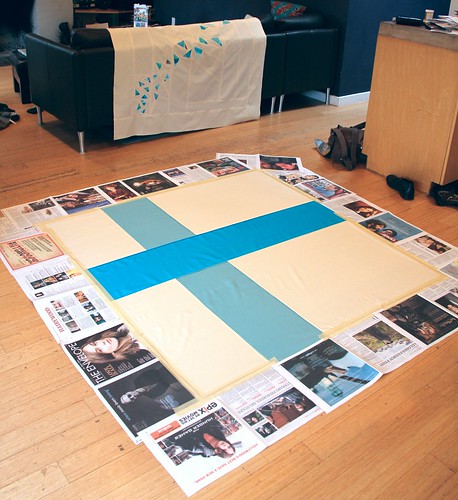
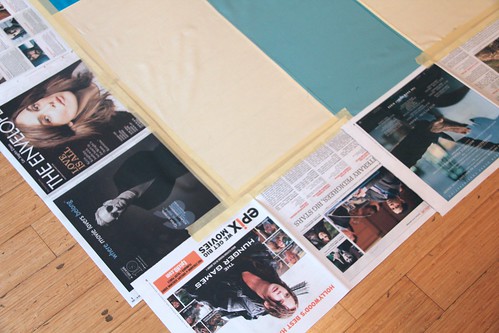

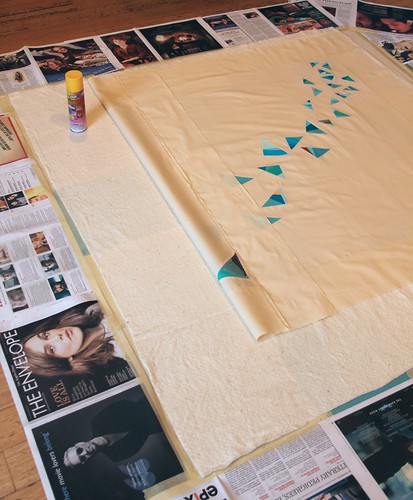
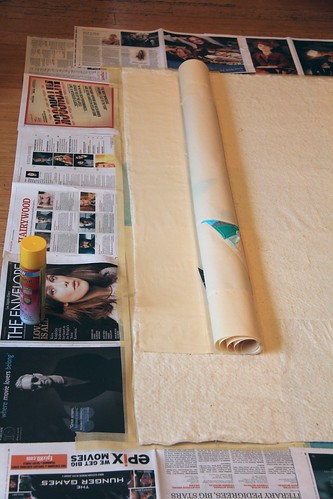
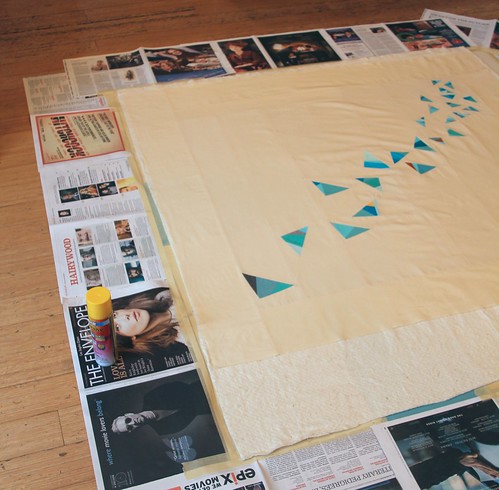
Oh I never remember to put paper down, I just mop the kitchen lino and stick to it on the bits I've missed for a day or two afterwards ;o) Otherwise, pretty similar lol
ReplyDeleteI am a huge fan of spray basting as well. Pinning was never my thing and I used to let tops sit for a long time because I hated basting.
ReplyDeleteI have really liked using an extra long cardboard tube from gift wrapping or shipping to roll my batting onto. Then the batting gets unrolled evenly across the entire length and can be rolled up again if one spot gets off. I find it unrolls so smoothly I have less problems with creasing and bubbles. I had to use my garage the other day as it was snowing outside so I taped down a queen size sheet to cover the, ahem, less than ideal floor and protect the fabric then taped my backing to that. It worked just fine but if I've got a bigger quilt I might have to also paper around the edges like you.
ReplyDeleteI like your idea of folding back the first 12 inches of batting, spraying it, then moving to the other end, that would keep everything nice and square, thanks for the idea!
ReplyDelete